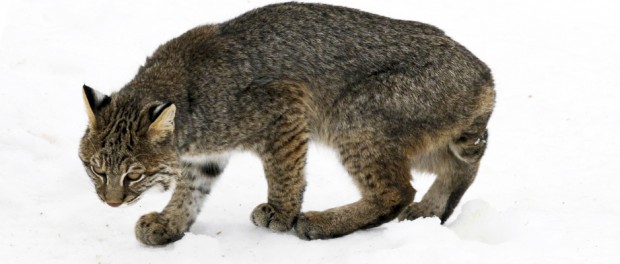Human Dimensions of Wildlife, 14:12–20, 2009
Copyright © Taylor & Francis Group, LLC
IRENA KNEZEVIC
Joint Graduate Program in Communication and Culture, York University/
Ryerson University, Toronto, Ontario, Canada
This work examined some assumptions that underpin the conflict between hunters and
anti-hunting movement. The moral contradictions of anti-hunting activism are positioned
in the complex context of consumer culture, managed environmental protection,
and industrial food production. The assumption that environmental groups are by definition
opposed to hunting is investigated. Given that both hunters and environmental
groups are interested in land conservation, and given the rapid habitat loss around the
globe, the question is asked whether joint conservation efforts would prove beneficial
not only to both groups’ interests, but also to the fragile North American ecosystems
and the species that reside in them.
Introduction
There are two billion chickens that are being slaughtered. Why is the fuzzy
seal photo-op the important one? Why aren’t you down in a slaughterhouse
where cows are being killed or calves are being killed or lambs are being
killed or chickens are being killed? (Williams, 2006, p. 10)
Danny Williams, the premier of Newfoundland and Labrador faced off with Paul and
Heather McCartney on Larry King Live in March of 2006. The McCartneys were visiting
to protest the annual harp seal hunt that for several years has been a favourite among activist
celebrities. Photos of red pools of seal blood on white snow and celebrities posing with
baby seals are usually meant to present the hunt as a practice of obtaining seal fur,
frequently obscuring the fact that many residents of the Canadian east coast and the north
consume seal meat on regular basis and that seal oil has a variety of medicinal and other
uses, to say nothing of the local cultural and economic significance of the annual hunt.
Harp seals are not endangered, and if anything they have in recent years seen higher
competition for food due to the shrinking habitat that has resulted from global warming.
...Violence and death associated with hunting is so overt and immediate that it makes
hunting an easy target for criticism. That criticism in turn ignores the “great paradox of
eating” (Kass, 1994). Death of living creatures is fundamental to continuation of life. Pete
Dunne, the director of Cape May Bird Observatory and as avid a hunter as he is a birdwatcher
writes, “Today, most people fail to recognize death as a natural part of life, to
view hunting as a mechanism that makes people an integral part of that natural process”
(2005, p. 662). Our detachment from our food sources has made it possible for us to eat
meat and somehow pretend that killing is not a part of the process. Aldo Leopold noted
that there are dangers in not owning a farm, one being “the danger of supposing that
breakfast comes from the grocery” (1968, p. 6).
...Culture creates an atmosphere where: “Nature is viewed by the mechanism of social domination
as a healthy contrast to society, and it is therefore denatured” (Adorno & Horkheimer,
1944, p. 19). These understandings of nature misdirect energy and resources into a conflict
rather than cooperation. Questioning our relationship with nature as well as our food system
is more productive than the persistent questioning, by both hunters and environmentalists,
of each other’s motives. That process can only benefit the population segment profits from
stalled conservation efforts (i.e., land developers and corporate polluters).
Our general understanding of and relationship to nature needs to be re-examined lest
our nostalgia continues to justify the commercial, utilitarian attitude that has become so
essential to how we treat our environment. For that task to be performed properly, prejudices
against hunting must be re-examined. To critique hunting without comprehensively
critiquing the larger context within which hunting exist is to gloss over more pressing
social and environmental issues by picking an easy scapegoat issue.
Read full paper -Human Dimensions of Wildlife
Publication details, including instructions for authors and subscription information:
http://www.informaworld.com/smpp/title~content=t713666717

 A bobcat creeps across a snowy backyard in Sutton, N.H. This photo is one of many submitted by the public while the researchers were collecting bobcat sightings. ©Robin Gray
A bobcat creeps across a snowy backyard in Sutton, N.H. This photo is one of many submitted by the public while the researchers were collecting bobcat sightings. ©Robin Gray


